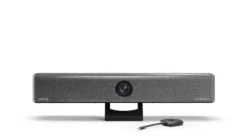Test Your Knowledge Of Wireless Protocols
Were you aware that the latest, greatest 802.11 wireless standards are not always the best option for enterprise installations? You are now.
TRUE OR FALSEANSWERS
- 802.11n is a new standard designed to offer significantly greater throughput, data rate, and range than previous versions on the 802.11 wireless standards.
- The latest, greatest 802.11 wireless standards are always the best option for enterprise installations.
- Because a wireless connection is working, it must not be encountering any interference.
- Today’s 802.11 wireless networks are secure.
1. FALSE. 802.11n is a proposed standard. The 802.11n specification has not yet been ratified by the Institute of Electrical and Electronics Engineers, and is not scheduled to be published until 2009. The standard process has been slowed by dueling vendor proposals, as a well as a recent patent controversy. None of this has stopped wireless gear providers from selling so-called Draft 2.0 products, based on a stable, but early version of 802.11n. The Wi-Fi Alliance, a trade group, is evening testing Draft 2.0 products for compatibility with other 802.11 products. Enterprises are unlikely to deploy pre-802.11n products, and enterprise-class companies such as Cisco Systems will wait on the sidelines until they can guarantee compatibility, etc. But yes, eventually 802.11n promises up to 74 Mbps throughput, 248 Mbps data rate, and 70 meters of effective range.
2. FALSE. Of today’s ratified 802.11 standards, 802.11a, which was released in 1999, is often the best choice for more critical, corporate or commercial links. That’s because 802.11a operates in the 5 GHz band, which is relatively uncluttered. The more popular 802.11b and 802.11g (the latter is compatible with 802.11a, the former is not) operate in the crowded 2.4 GHz band. That said, a 802.11a network must be well designed. Its range is less than the other protocols, and it doesn’t penetrate walls or other impediments as well.
3. FALSE. The 802.11 protocol is fairly good at handling interference, which can come from a number of sources—microwaves, cordless phones, Bluetooth devices, fluorescent lights, even bad electrical connections. If an 802.11 device senses interference, it can hold off its own transmission until the interference burst passes. Or it will retransmit data until it gets a receipt. Holding off and retransmitting, though can significantly impact throughput. By some estimates, a microwave operating at the same frequency as a 802.11 network can reduce the latter’s capacity by half.
4. TRUE. As much as anything in information technology today can be called secure, current 802.11 technology protects data from snoops. True, early versions could be easily hacked, but starting in 2004 with 802.11i (also known as Wi-Fi Protected Access 2), networks began incorporating the government-strength Advance Encryption Standard. Companies can throw in a Remote Authentication Dial In User Service (RADIUS) server for safe measure.








